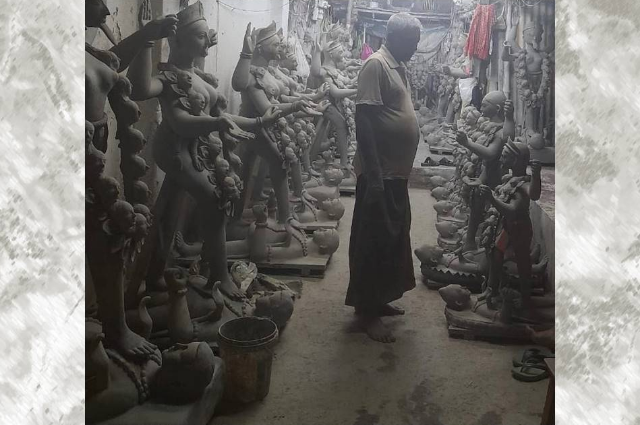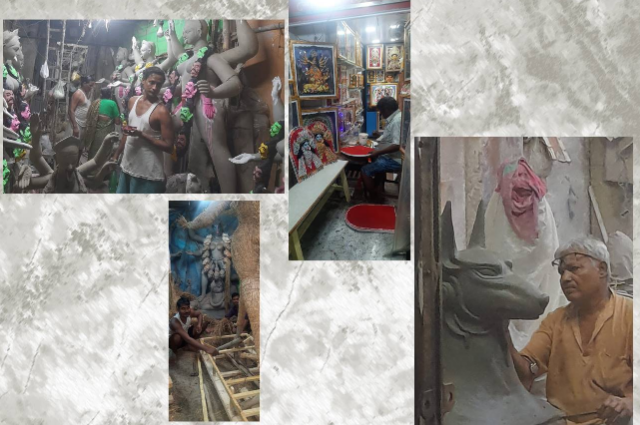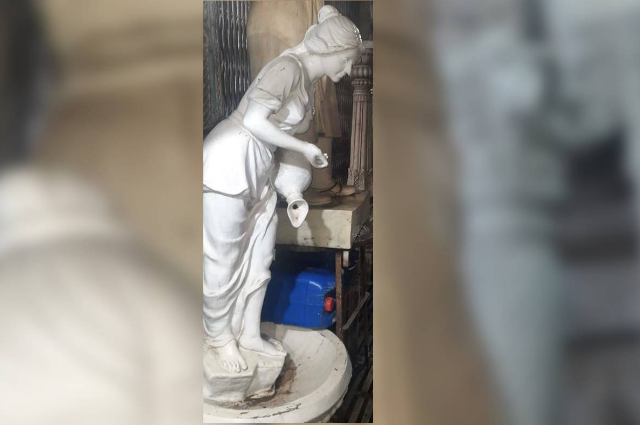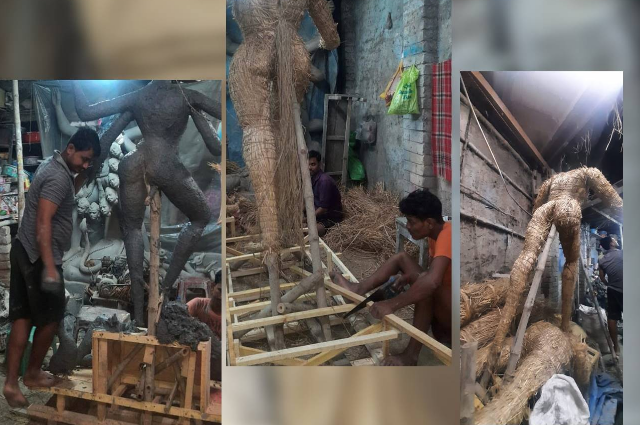
Kumartuli (Kolkata, West Bengal) is a historic heritage place in the City of Joy with a unique distinction. This is a traditional potters' quarter in northern Kolkata, West Bengal, India. The city is renowned for its sculpting prowess. It not only manufactures clay idols for various festivals but also regularly exports them overseas. The place shows outstanding traditional craftsmanship as well as sincere dedication and meticulous hard work of the artisans in transforming bamboo, wood, clay, jute, and hay into monumental awe-inspiring statues and breathtaking works of art that have inspired several generations. This craftsmanship has been passed from one generation to another and has retained its ancient essence ornamented with implications of modern art over time. Indeed a heritage site of the city that will continue to inspire countless generations through its outstanding ingenuity, excellent work ethics, and monumental artworks that have been a pride of Kolkata.

The importance of Kumartuli is further enhanced now since the eco-friendly nature of idol production is being globally recognized. Recently, UNESCO has recognized the Durga Puja celebration and the Durga Puja carnival in Kolkata (West Bengal) as an international heritage event for the first time in the continent of Asia. This also highlights the monumental role of Kumartuli in the majestic Durga Puja celebration in the City of Joy. Since most of the Goddess Durga and other idols of different Hindu deities worshipped in both West Bengal and adjoining Indian states as well as overseas are produced here in the Kumartuli locality by highly experienced and skilled artists and craftsmen.

Entire families of artisans are involved in this process, and the production transforms into a family and social project for the people here rather than a distinct traditional profession. The idols are mostly prepared from eco-friendly biodegradable plant-based products like bamboo, timber, straw, hay, jute stems and threads, ropes made from coconut fibers, and above all the alluvial soil from the Hooghly (Ganges) River. All the resources are procured from nature and used sustainably to produce outstanding works of art by traditional methods and techniques passed on from one generation to the next.

Kumartuli not only produces a massive number of idols every year; but also numerous decorative pieces for the ornamentation and dressing of the pandals, platforms, temples, and domestic worship. One of the most common materials used in such decoration is mostly prepared from ‘shola ‘ also referred to as the Indian cork. It is a wild, annual, plant that grows in waterlogged areas. In this traditional artwork, the craftsmen prepare numerous decorative objects used in the ornamentation of the idols by using the very thin, soft, porous, and light weight core of the plant stem.

This traditional art form is used extensively in West Bengal, Bihar, Jharkhand, and Orissa in India and also in adjoining Bangladesh. In addition to the traditional shola; other modern-day decorative materials used are various types of colored papers, very thin aluminum foils, plastics, polymers, sparkles, sari, cotton threads, wooden beads, thermocol, colored sand, velvet, zari, and other associated decorative pieces. The final product is an outstanding piece of art that intrigues our minds. Due to stringent regulations incorporated by both state and central pollution control boards and the honorable Green Bench of Environmental Justice; water-soluble synthetic paints or nature-based paints or natural colors are now being used to reduce the negative impact on the water bodies following immersion of idols post puja.

Thus Kumartuli represents a unique heritage location within the boundaries of the Kolkata metropolis. According to some researchers, the age of Kumartuli itself is much older than the modern city of Kolkata. It has continued with its excellence in creativity and contributed significantly in terms of the heritage criteria for Kolkata from its ancient days of glory and glamour. Today the artisans are not just restricted to the Gangetic alluvial soil and shops as the medium for producing; but are using polymers, fiberglass, cement, stones and rocks, and other experimental resources for producing iconic idols that are globally appreciated abs accredited. The artisans and craftsmen of Kumartuli will continue to make us proud through their outstanding ingenuity, creativity and meticulous hard work, and devotion in carrying this traditional artwork forward.
